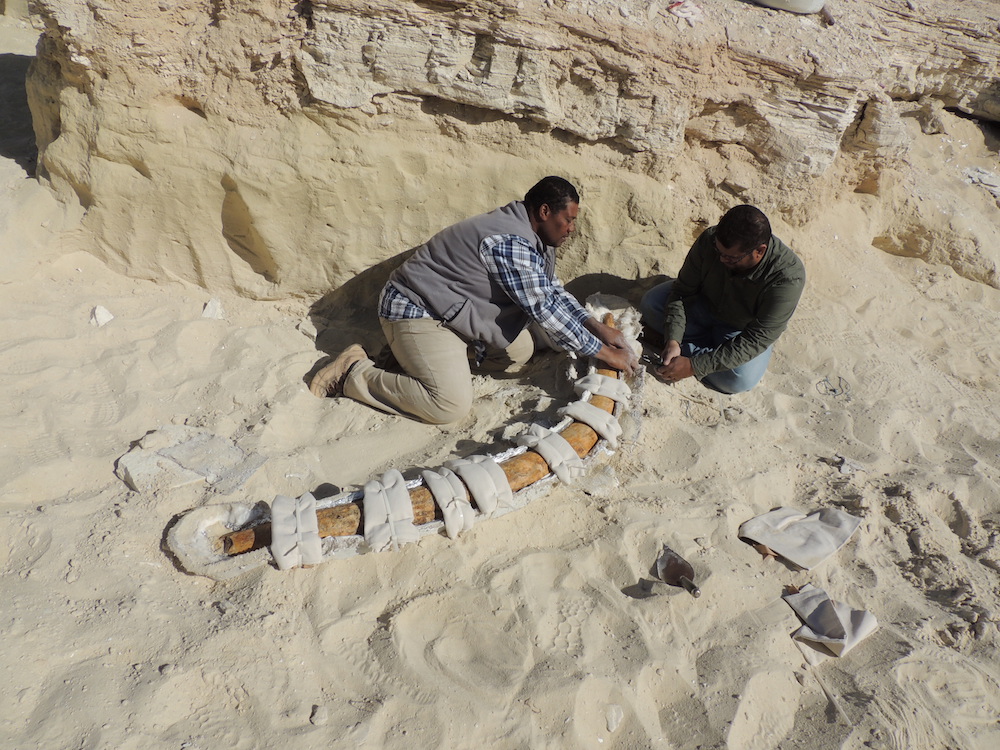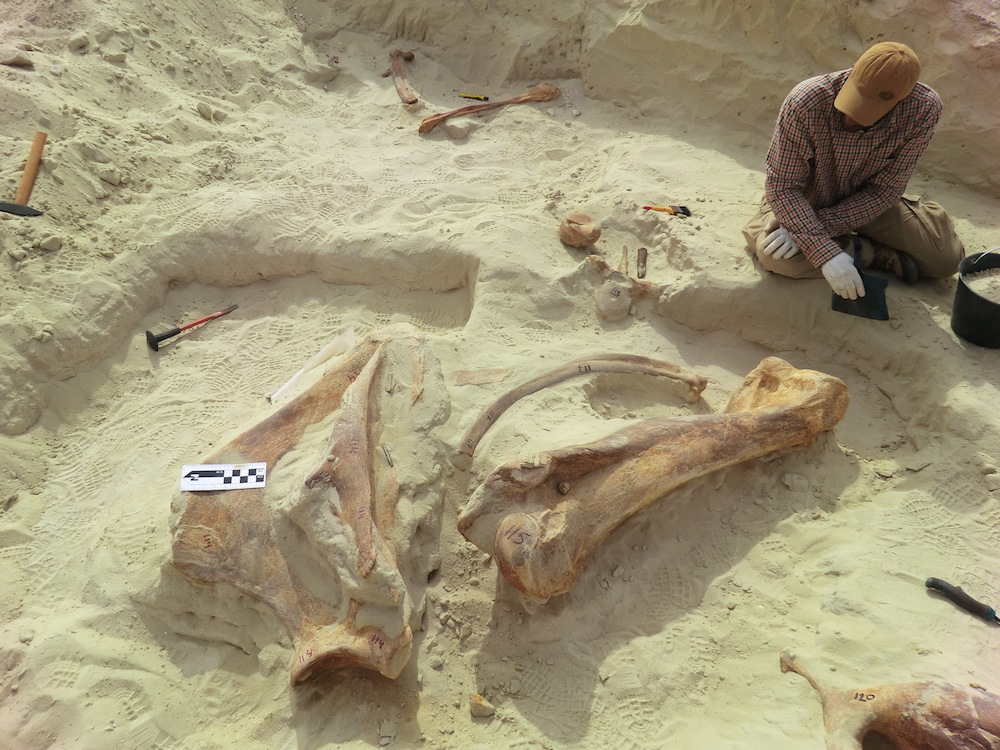Ancient 'Monster' Elephant Was 50 Percent Bigger Than Modern Cousins

CALGARY, Alberta — Half a million years ago, the Arabian Peninsula wasn't a sandy desert but rather a lush, wet landscape. There, a gigantic elephant — 50 percent larger than today's biggest elephants — tromped around an ancient lake before dying, a new fossil skeleton reveals.
The behemoth, known as Elephas recki, is an ancient elephant species that existed from about 3.5 million years ago to about 300,000 years ago and lived in parts of Africa and the Middle East, said study lead researcher, Iyad Zalmout, a paleontologist with the Saudi Geological Survey in Jeddah.
Researchers first began uncovering the newfound animal's remains in northwestern Saudi Arabia's Nafud Desert in 2014, but other parts of the same individual were unearthed as recently as this year, and excavation work is ongoing, said study co-researcher Dan Fisher, the director of the Museum of Paleontology at the University of Michigan. [Mammoth Resurrection: 11 Hurdles to Bringing Back an Ice Age Beast]
So far, researchers have discovered about 60 percent of the elephant's fossilized bones, making it "one of the best-preserved examples of this species from this part of the world," Fisher told Live Science. Scientists have found fossils of this ancient Asian elephant relative before, including a 1.8-million-year-old individual from the Turkana Lake Basin in northern Kenya.
Fisher added that although E. recki was 50 percent larger than the largest modern elephants, it was vastly heavier, "at least twice the weight of today's elephants, if not more," Fisher said.
The bull (a male elephant) had reached adulthood before it died, an analysis of its bones revealed. After the animal kicked the bucket, the fine sands of an ancient lake system preserved the creature's bones. Its fossils are so intact, researchers are making 3D models of some of them using a laser-scanning digitizer so that they can be shared virtually online with other researchers, Fisher said.
"This work is providing a more detailed understanding of the bones of this species of elephant," Fisher said. "This is important because it provides the foundation for more-thorough analyses of new sites where we anticipate more remains of this type of elephant will occur."
Get the world’s most fascinating discoveries delivered straight to your inbox.
Human contact?
There was no evidence that human ancestors lived at this site 500,000 years ago, when this particular elephant stomped around, but the researchers said they hope to find evidence that the two coexisted at other fossil sites.
Elephants and early humans took similar routes as they trekked out of Africa and dispersed into the Middle East and Eurasia, so it's likely they crossed paths at some point, Fisher said. (Note that researchers aren't talking about Homo sapiens, which developed between 200,000 and 300,000 years ago, but rather their hominin predecessors.)
"We know that early humans were contemporaries of these elephants in this part of the Arabian Peninsula," Fisher said. "Although we have not yet found sites where these elephants are associated with evidence of human activity, we want to be ready to interpret any such discoveries when and if they do arise."
At the time this elephant died, ancient elephants and early humans would have encountered a wet climate that watered a green landscape of the Arabian Peninsula, Zalmout said. During parts of the Pleistocene (an epoch lasting from 2.6 million to 11,700 years ago), Saudi Arabia had a greater diversity of animals than it does today, including vertebrates such as camels, gazelles, antelopes and carnivores, including big cats and hyena ancestors.
"It was a vibrant place," Zalmout told Live Science.
The research, which has yet to be published in a peer-reviewed journal, was presented here on Aug. 23 at the 2017 Society of Vertebrate Paleontology meeting.
Original article on Live Science.

Laura is the managing editor at Live Science. She also runs the archaeology section and the Life's Little Mysteries series. Her work has appeared in The New York Times, Scholastic, Popular Science and Spectrum, a site on autism research. She has won multiple awards from the Society of Professional Journalists and the Washington Newspaper Publishers Association for her reporting at a weekly newspaper near Seattle. Laura holds a bachelor's degree in English literature and psychology from Washington University in St. Louis and a master's degree in science writing from NYU.



